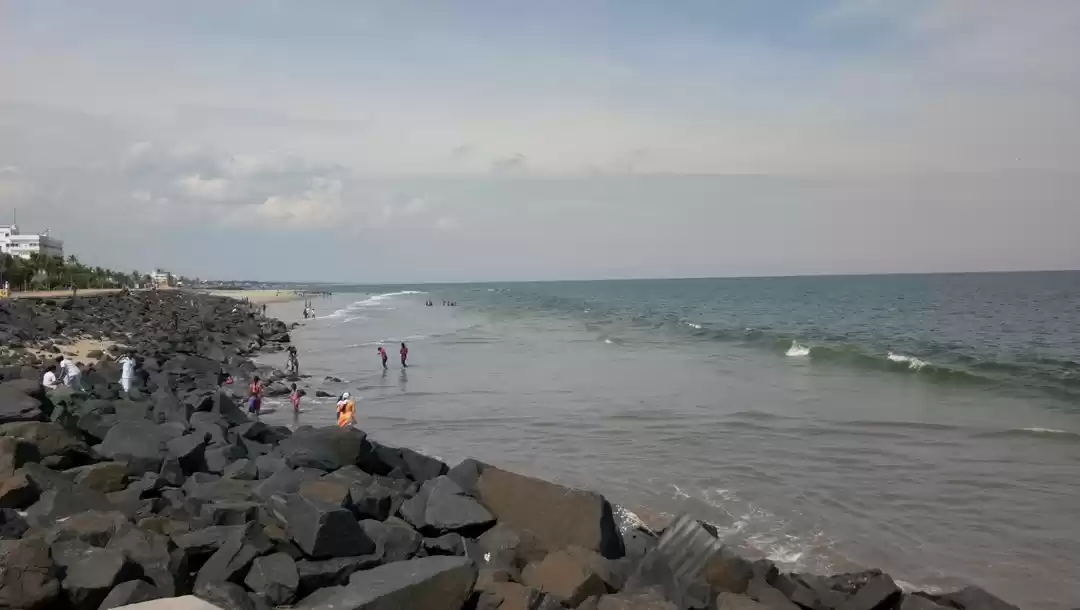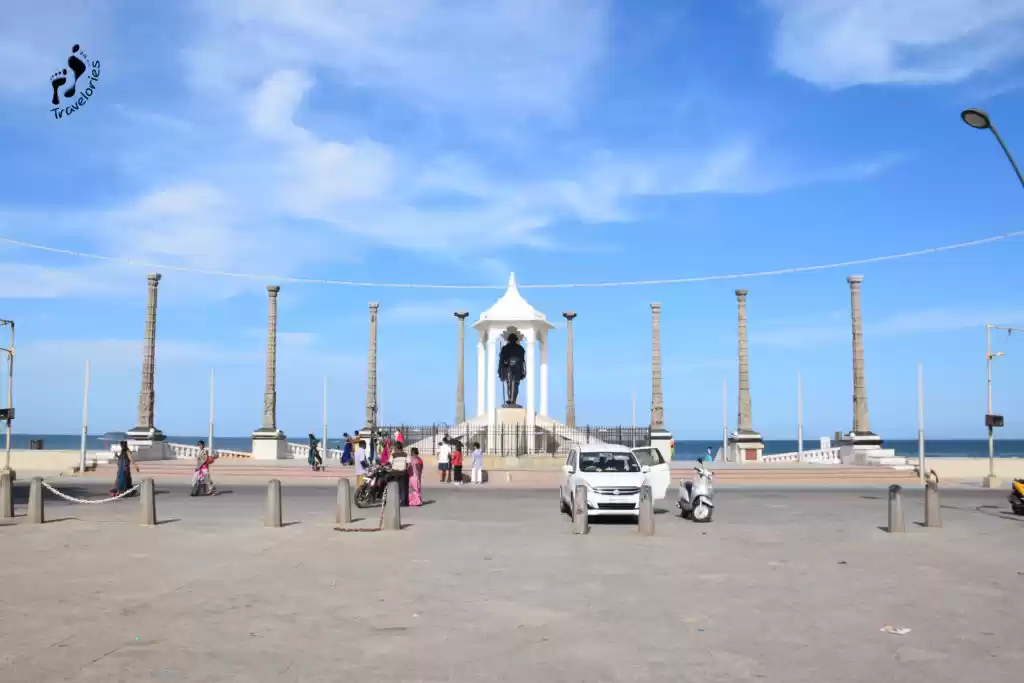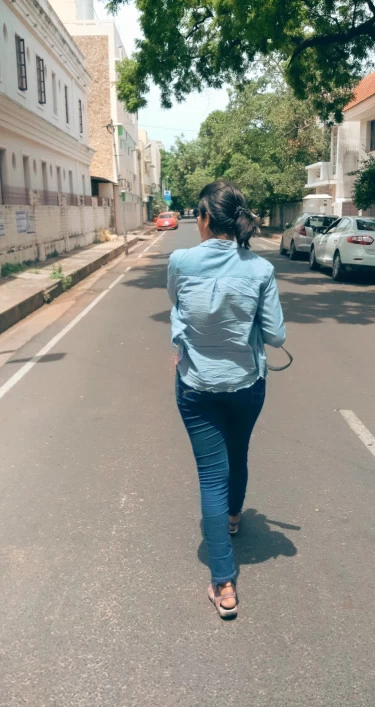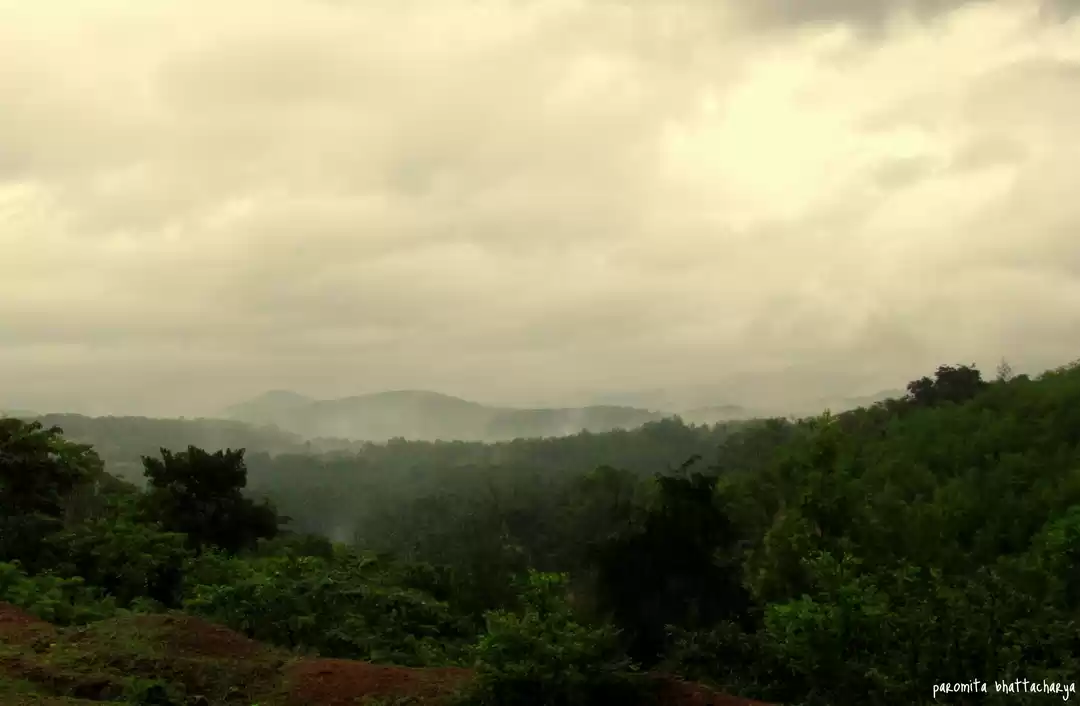Aayi, a courtesan who donated her house and parcel of her land to dig up a pond to tackle the water crisis in the Puducherry region forms the basis for this story. A land in which people have shared a special bond with their water bodies, Pondicherry has more to offer than what meets the tourist eyes.
A union territory along the Coromandel Coast, this erstwhile French Colony earlier ruled by the Vijayanagara Dynasty is land of many untold stories. Pondicherry, a small administrative zone stands out from the big brother Tamil Nadu. Adorned with water bodies such as Velrampet Lake, Bahour Lake, Kanagan Lake and more, this coastal town is also where several non-perennial streams meet the Bay of Bengal.
Home to several Ponds which once had beautiful local lilies, fish, crabs and more growing in them, have become devoid of all life and today turned into cesspools. One such a pond is the Ezhil Nagar ‘Arasamara Kulam’ near Villianoor in Pondy. The name ‘Arasamara Kulam’ in Tamil refers to the pond by the Peepal Tree.
The pond with a dense Peepal tree on the Northern bank, bamboo shrubs on the Southern bank was a perfect habitat for several birds, amphibians, reptiles and more. With rapid urbanization and unregulated growth, the pond witnessed extensive abuse. This included dumping of solid waste and liquid waste into the pond ecosystem. Steady encroachments took over the abandoned pond and soon there was to be no pond visible from the road.
That is when based on inputs from local residents, the Environmentalist Foundation of India (E.F.I) took on the task of scientifically restoring the water body. The pond needed a complete makeover and offered a great potential for a first of its kind eco-restoration. The incoming sewage was first boxed and is now being filtered before being let into the pond. The solid waste from the pond was manually removed through volunteer efforts and mechanized work. The Pond was structurally deepened to have a three box set up, which included the core-recharge pit, the buffer recharge trench and the peripheral sloping bunds with local variety saplings.
The incoming water flow is now being regulated before it enters the core pond area, thereby ensuring natural oxidation and sedimentation. This helps filter the incoming flow to a fine degree. Over the weeks, native saplings such as Vettiver, Neem, Pongamia, Palm and other berry bearing, nectar bearing saplings are to be planted along the bunds. This is to be followed by fencing of the outer boundary of the pond.
The transformation of the pond just in time for the monsoon rains has pumped in optimism in the local community. E.F.I plans to adopt 8 more water bodies in Pondy in the months ahead post monsoons. This community based conservation efforts in reviving neglected water bodies is much needed given the climate change induced adversities that humanity is experiencing world over.
A union territory along the Coromandel Coast, this erstwhile French Colony earlier ruled by the Vijayanagara Dynasty is land of many untold stories. Pondicherry, a small administrative zone stands out from the big brother Tamil Nadu. Adorned with water bodies such as Velrampet Lake, Bahour Lake, Kanagan Lake and more, this coastal town is also where several non-perennial streams meet the Bay of Bengal.
Home to several Ponds which once had beautiful local lilies, fish, crabs and more growing in them, have become devoid of all life and today turned into cesspools. One such a pond is the Ezhil Nagar ‘Arasamara Kulam’ near Villianoor in Pondy. The name ‘Arasamara Kulam’ in Tamil refers to the pond by the Peepal Tree.
The pond with a dense Peepal tree on the Northern bank, bamboo shrubs on the Southern bank was a perfect habitat for several birds, amphibians, reptiles and more. With rapid urbanization and unregulated growth, the pond witnessed extensive abuse. This included dumping of solid waste and liquid waste into the pond ecosystem. Steady encroachments took over the abandoned pond and soon there was to be no pond visible from the road.
That is when based on inputs from local residents, the Environmentalist Foundation of India (E.F.I) took on the task of scientifically restoring the water body. The pond needed a complete makeover and offered a great potential for a first of its kind eco-restoration. The incoming sewage was first boxed and is now being filtered before being let into the pond. The solid waste from the pond was manually removed through volunteer efforts and mechanized work. The Pond was structurally deepened to have a three box set up, which included the core-recharge pit, the buffer recharge trench and the peripheral sloping bunds with local variety saplings.
The incoming water flow is now being regulated before it enters the core pond area, thereby ensuring natural oxidation and sedimentation. This helps filter the incoming flow to a fine degree. Over the weeks, native saplings such as Vettiver, Neem, Pongamia, Palm and other berry bearing, nectar bearing saplings are to be planted along the bunds. This is to be followed by fencing of the outer boundary of the pond.
The transformation of the pond just in time for the monsoon rains has pumped in optimism in the local community. E.F.I plans to adopt 8 more water bodies in Pondy in the months ahead post monsoons. This community based conservation efforts in reviving neglected water bodies is much needed given the climate change induced adversities that humanity is experiencing world over.




























